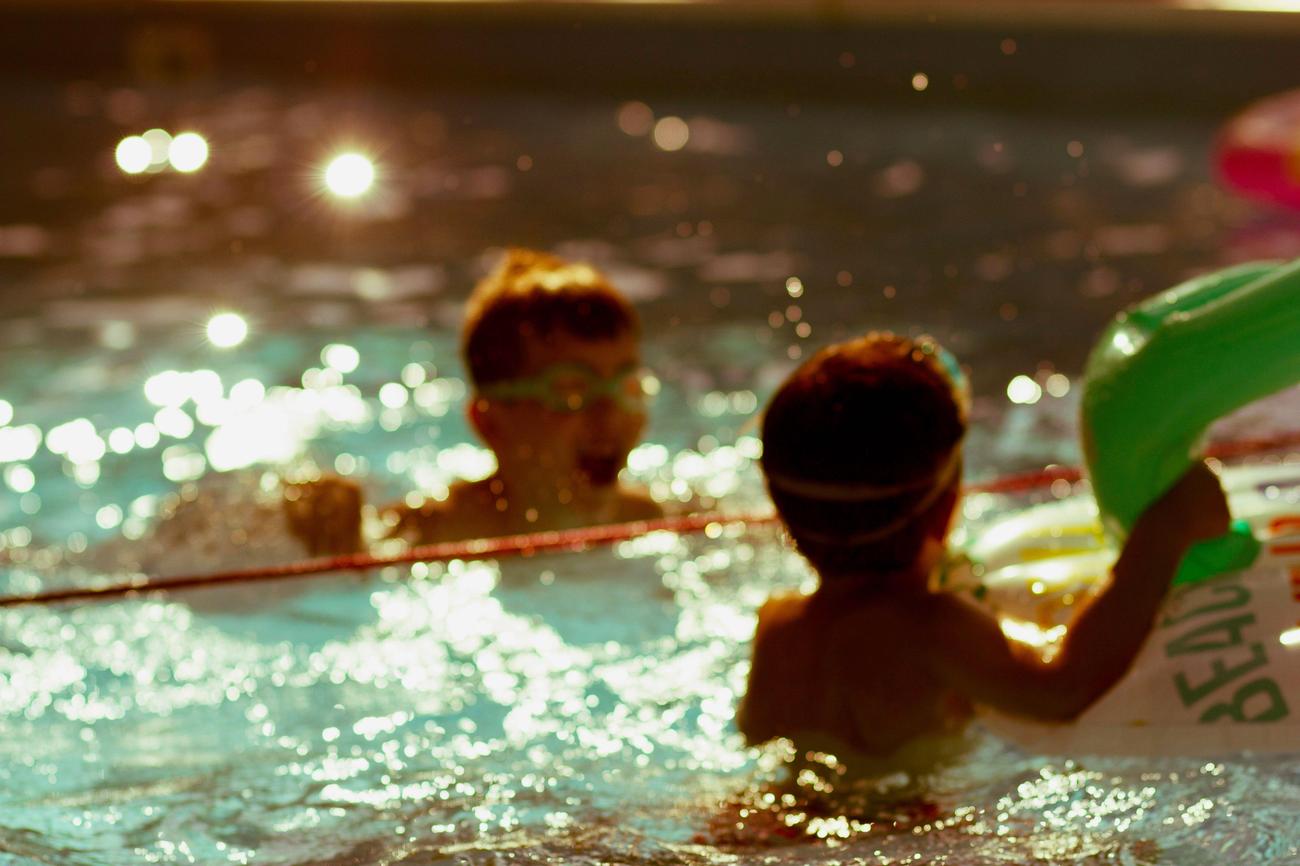Get ready to dive into the depths of competitive swimming! In this article, we will explore the fascinating world of aquatic competitions, uncovering intriguing facts that will leave you in awe. As a seasoned sports journalist with a passion for this captivating sport, I have witnessed the thrill of Olympic events and world championships firsthand. Now, I am eager to share the lesser-known histories, record-breaking feats, and astonishing techniques that make competitive swimming so enthralling. So, buckle up and prepare to be amazed as we unveil the fascinating facts about competitive swimming!

Fascinating facts about competitive swimming
Competitive swimming is a captivating sport that is filled with incredible stories, astonishing accomplishments, and mind-boggling feats. From the rigorous training routines to the remarkable records broken, the world of competitive swimming is a treasure trove of fascinating facts that will leave you in awe. So, prepare to dive into the depths as we unveil some incredible and little-known aspects of this thrilling sport.
The power of endurance: Swimming the distance
One of the most astounding facts about competitive swimming is the sheer amount of daily training that swimmers undergo. Can you imagine swimming 6-12 miles in a single day? Well, that’s precisely what most competitive swimmers do. It takes unimaginable stamina and determination to complete such an intense workout routine. These athletes endure grueling training sessions to build up the endurance necessary for their races. As they push their bodies to the limit, they inspire us with their unwavering dedication and commitment to the sport.
“Competitive swimmers go to unimaginable lengths, literally, swimming distances that most of us can only dream of. Their perseverance and relentless pursuit of excellence are truly remarkable.”
The magnitude of an Olympic pool
Have you ever wondered just how much water is in an Olympic-sized swimming pool? Brace yourself for this mind-blowing fact: an Olympic pool can hold up to a staggering 850,000 gallons of water! That’s enough water to fill more than 1,300 standard-sized bathtubs. The immensity of these pools serves as a testament to the grandeur and significance of Olympic swimming events.
“When you step into an Olympic-sized pool, you’re not just jumping into a body of water; you’re diving into a colossal reservoir of history, achievement, and breathtaking moments.”
Breaking barriers: Pioneering swimmers
Competitive swimming has witnessed several trailblazing figures throughout its history. One such remarkable pioneer was Gertrude Ederle, a woman who defied societal expectations and became the first woman to swim across the treacherous English Channel in 1926. Ederle’s groundbreaking achievement shattered gender barriers and paved the way for future generations of female swimmers. Her courage and determination continue to inspire athletes around the world.
“Gertrude Ederle’s historic swim was more than just a personal triumph. It was a watershed moment that forever changed the perception of women in the world of competitive swimming.”
Records that make waves: Mark Spitz’s golden haul
Mark Spitz is a name synonymous with excellence and dominance in competitive swimming. In the 1972 Olympic Games, Spitz accomplished something truly extraordinary – he won an unprecedented 7 gold medals, breaking the record for the most golds won in a single Olympic Games. His phenomenal feat captivated the world and solidified his status as an icon in the swimming community. Spitz’s remarkable record stands as a testament to the sheer talent, commitment, and unwavering focus required to achieve greatness in this demanding sport.
“Mark Spitz’s historic feat raised the bar for all future swimmers, serving as a reminder that there are no limits to what the human body can achieve with passion, training, and an unwavering belief in oneself.”
Precision in performance: The art of shaving
When you think of shaving, swimming may not be the first thing that comes to mind. Yet, for competitive swimmers, shaving plays a vital role in enhancing their performance in the water. In the pursuit of speed, swimmers often shave their entire bodies before a competition. The removal of body hair not only reduces drag but also enables their bodies to glide through the water with utmost efficiency, making them more aerodynamic. This meticulous attention to detail showcases the lengths swimmers go to maximize their chances of success.
“Swimmers take shaving to a whole new level, transforming themselves into streamlined beings, akin to sleek dolphins gracefully navigating through the water.”
Ancient beginnings: Swimming through time
Swimming is not just a modern-day phenomenon; it has ancient roots that trace back thousands of years. Ancient Egyptian paintings and drawings dating back to 2500 BC depict people swimming, providing evidence that swimming has been a part of human culture for millennia. These early depictions highlight the timeless appeal of swimming and its enduring significance as a universal activity that has captivated humans throughout the ages.
“Swimming has been a fundamental part of human history, transcending time and cultures. From ancient Egyptians to modern-day athletes, the allure of the water continues to captivate our hearts and inspire our souls.”
Calorie-busting aquatic exercise
Adding to the already impressive list of benefits, swimming also has remarkable effects on our fitness levels. Did you know that an hour of vigorous swimming can burn up to a whopping 650 calories? That’s more than running or cycling and is a testament to the incredible workout that swimming provides. Not only does swimming strengthen your cardiovascular system, but it also engages multiple muscle groups, making it one of the most effective and enjoyable forms of exercise.
“Swimming isn’t just a sport; it’s a calorie-incinerating, full-body workout that offers a refreshing and invigorating alternative to traditional exercises.”
The birth of competition: Racing through history
Competitive swimming has a rich and storied history, dating back centuries. The first recorded swimming races are believed to have taken place in Japan in 36 BC. These early competitions laid the foundation for the modern-day spectacle that swimming has become. Through the ages, swimming races have evolved, captivated audiences worldwide, and provided a platform for athletes to showcase their extraordinary talents.
“The echoes of those first swimming races still resonate in the swishing of water, the cries of triumph, and the boundless passion that surrounds the competitive swimming events we witness today.”
Dive into the depths and discover more!
These fascinating facts about competitive swimming only scratch the surface of this captivating sport. The world of competitive swimming is teeming with even more astonishing secrets waiting to be explored. So, dive in and join us as we venture further into the waters, uncovering more captivating tales, extraordinary records, and breathtaking moments that make up the awe-inspiring realm of competitive swimming.
Swimming is a sport that requires immense dedication, strength, and endurance. If you’re intrigued by the world of competitive swimming, you won’t want to miss out on these fascinating fun facts about the sport. Discover the evolution of swimwear designs, learn about impressive world records, and delve into the rich history of this exhilarating activity. Explore our list of Fun Facts About Competitive Swimming and prepare to be amazed by the incredible feats of athleticism that have redefined the boundaries of human potential. So, what are you waiting for? Dive into the captivating world of competitive swimming by clicking here: Fun Facts About Competitive Swimming. Get ready to be inspired and gain a whole new appreciation for this remarkable sport.
FAQ
Q: How much do competitive swimmers usually swim in a day?
A: Most competitive swimmers swim 6-12 miles a day.
Q: What is the capacity of an Olympic pool?
A: An Olympic pool can hold up to 850,000 gallons of water.
Q: Who was the first woman to swim the English Channel?
A: Gertrude Ederle was the first woman to swim the English Channel, in 1926.
Q: Who holds the record for the most gold medals in one Olympic games in swimming?
A: Mark Spitz holds the record for the most gold medals in one Olympic games in swimming, winning 7 gold medals at the 1972 games.
Q: Why do swimmers shave their bodies before a competition?
A: Swimmers often shave their entire bodies before a competition to make them more aerodynamic.
Q: When were the first recorded swimming races held?
A: The first recorded swimming races were held in Japan in 36 BC.
Q: How many calories can an hour of vigorous swimming burn?
A: An hour of vigorous swimming can burn up to 650 calories.
Q: Are there any historical records of swimming?
A: Yes, ancient Egyptian paintings and drawings depict people swimming as far back as 2500 BC.
- Unlock 6000+ words beginning with he: A comprehensive analysis - April 20, 2025
- Mastering -al Words: A Complete Guide - April 20, 2025
- Master Scrabble: High-Scoring BAR Words Now - April 20, 2025
















